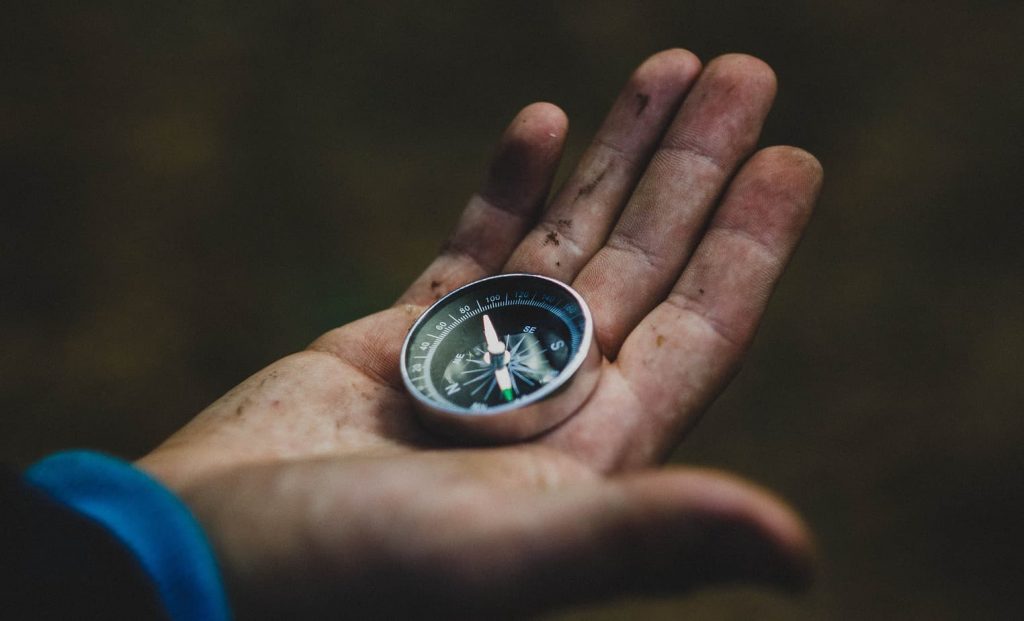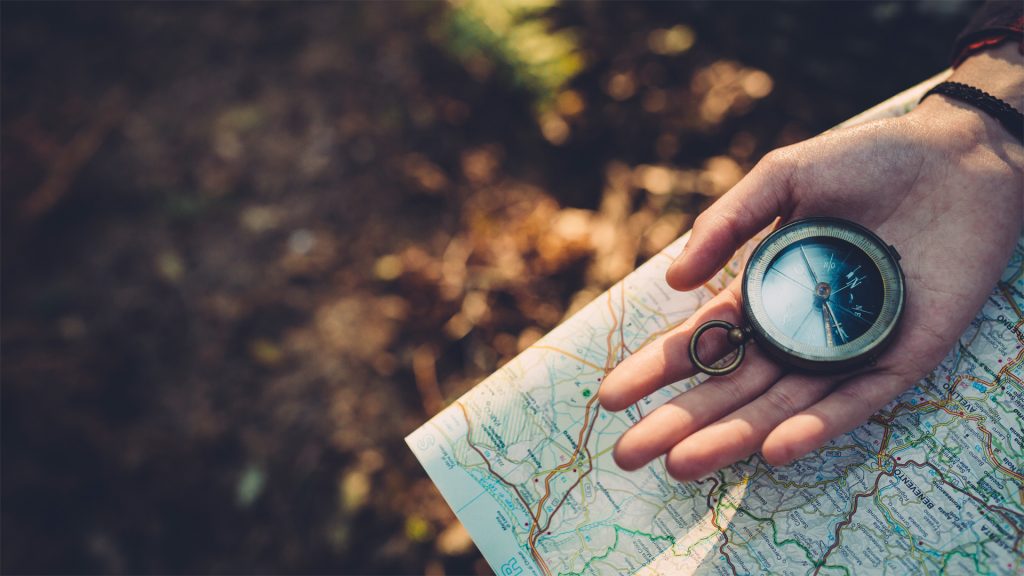It would be best if you were prepared for any situation out in the wild. The wilderness is unpredictable, and you may be in grave danger if it catches you unprepared. We often hear stories of hikers going on a trek in the wild and getting lost with no means of finding their way home.
This is why it is important to know how to make a compass in the wild out of materials around you. A compass, even an improvised one, will guide you if you are lost in the wild. After all, you do not want to be stuck in the wilderness longer than necessary. The faster you find your way back, the less danger you are in.

How to Make a Compass in the Wild
In order to make a compass in the wild, you need an electricity conductor like a needle, which you may have in your medical kit or a bobby pin. Next, you will need a leaf and water. Magnetize the needle and put it on the leaf, and palace them in the water to finish your compass.
Making Your Compass in the Wild
A needle and something that will allow it to pivot like a leaf are necessary for creating a compass outdoors. Unmagnetized metal can be utilized and then magnetized. Any metal object, such as a bobby pin, or needle, will get the job done by hanging from a length of thread.
By carefully moving a metal object through your own hair or a piece of silk in one direction, you can magnetize it. Metal can also be made magnetic by gently touching one end of it with a magnet.
It is ideal to magnetize your needle with a magnet, but it is understandable that if you are lost, you likely have not brought one with you. So, your hair, silk, or the fur on your jacket can work for you to magnetize the needle.
Once you have magnetized your needle or bobby pin, place them on the leaf that serves as a pivot and lower them in a puddle of water. Or if there are no puddles of water around you, you likely have a bottle of water with you that you can pour into a container of any kind and place the makeshift compass in it.
The compass will work as the magnetized needle will rotate freely and align with Earth’s magnetic fields. The needle should pull the leaf clockwise or counter-clockwise to orient itself north-south. After you figure out your poles, you will be able to navigate and get yourself home.
Other Ways to Make a Compass in the Wild
If you do not have a water bottle on you and there are no puddles of water, you can try another basic compass method to make a compass in the wild. That method is the string and needle one. The needle and string technique is the most straightforward, requires the fewest instruments, and is hence most useful in a genuine emergency.
Take some string off of your clothes. Find a pin or needle-sized piece of wire. Rub the metal item repeatedly in one direction with silk, wool, or hair to magnetize it.
Place the string with the needle suspended there in a wind-free area. It will orient itself to the magnetic North and South. Choose the end that faces North using the sun, then mark it on the needle.
Read more: How to Make a Bow and Arrow in the Forest

Assembling the Components of Your Makeshift Compass
If you want your makeshift compass to work, you must ensure all components are done correctly.
Making the compass needle
A compass needle can be made from various steel or iron components. The best everyday objects are razor blades and needles. Each of these should be a staple in your survival or first aid pack because they have a variety of uses.
Paper clips, tiny nails, and safety pins are additional metal objects that can be used as compass needles. When the metal object is magnetized and suspended to allow for free movement unaffected by wind or other forces, it transforms into a compass needle. The Earth’s magnetic attraction directs the needle in a north-south direction.
Pivoting the magnetized needle
There are a number of possibilities for the pivot, depending on how much gear you have with you, and its purpose is to give the needle unfettered movement.
- The pin can move freely when positioned on a tiny floating leaf. To make this compass portable, you will need a small bottle with some water. Or if you are near some puddles of water made from rain, you can suspend the leaf in it.
- You can make a more portable magnet with wind protection by tying the needle to a rope and hanging it inside a bottle or tin can.
Additional Ways to Verify Your Direction
If you find yourself lost in the wild, besides your makeshift compass, you can also verify the direction shown on it is correct by using some additional methods.
- First, if you are lost in the wild, check to see moss on which side of the trees. As moss grows in the shade, it will be on the north side of the trees.
- On the other hand, you can look at spiderwebs. They will be on the other side of the moss, meaning they are on the south side of the trees.
- The last way is to follow the shadows. You can do this only in sunny places by placing a stick on the ground with a marker to know where the shadow started. Wait for about 30 minutes and see how the shadow changes. With this method, you can find your east and west.
Conclusion
In conclusion, experience is worth over everything else in the wilderness. This is why it is important to know how to make a compass in the wild. When you are on a hike or exploring the great outdoors, there is always a chance that you may get lost. Knowing how to conduct yourself and what to do at the moment will help you get back to civilization.
